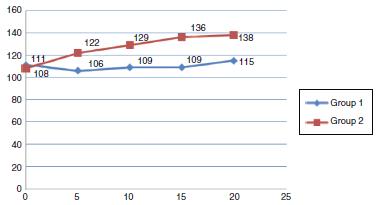ABSTRACT
BACKGROUND AND OBJECTIVE:
To compare the therapeutic effects of ketamine alone or ketamine plus propofol on analgesia, sedation, recovery time, side effects in premedicated children with midazolam-ketamine-atropin who are prepared circumcision operation.
METHODS:
60 American Society of Anaesthesiologists physical status I-II children, aged between 3 and 9 years, undergoing circumcision operations under sedation were recruited according to a randomize and double-blind institutional review board-approved protocol. Patients were randomized into two groups via sealed envelope assignment. Both groups were administered a mixture of midazolam 0.05 mg/kg + ketamine 3 mg/kg + atropine 0.02 mg/kg intramuscularly in the presence of parents in the pre-operative holding area. Patients were induced with propofol-ketamine in Group I or ketamine alone in Group II.
RESULTS:
In the between-group comparisons, age, weight, initial systolic blood pressure, a difference in terms of the initial pulse rate was observed (p > 0.050). Initial diastolic blood pressure and subsequent serial measurements of 5, 10, 15, 20th min, systolic blood pressure, diastolic blood pressure and pulse rate in ketamine group were significantly higher (p < 0.050).
CONCLUSION:
Propofol-ketamine (Ketofol) provided better sedation quality and hemodynamy than ketamine alone in pediatric circumcision operations. We did not observe significant complications during sedation in these two groups. Therefore, ketofol appears to be an effective and safe sedation method for circumcision operation.
Keywords:
Ketamine-propofol; Sedation; Circumcision



